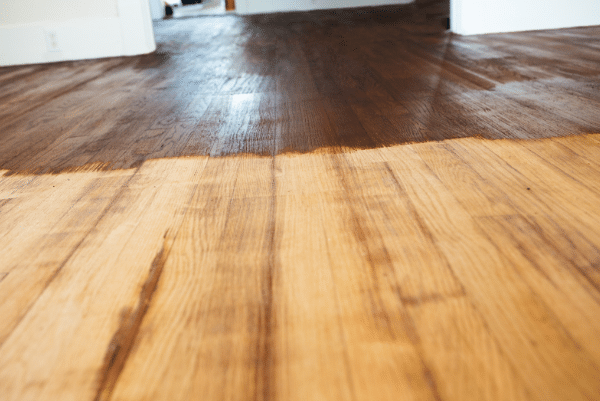Your floors work hard. When they start to look tired, you’ve got two good options: refinish what you have or install new. Both can look fantastic. The right choice comes down to your goals, the floor’s condition, and your timeline. Here’s how we help homeowners think it through.
Start with the end in mind
- Look: Keep the same character with a fresh finish, or change the color and sheen.
- Design changes: Staying with the same footprint, or adding wood to new rooms?
- Timing: Working around a move-in, a renovation phase, or a big date on the calendar?
- Budget: Will a high-impact refresh do it, or is this the moment for a full redesign?
When refinishing is usually the win
Refinishing sands the existing surface and applies new stain and protective finish. It’s a great fit when the layout works and the wood is in decent shape. You can go lighter, darker, or natural, and choose a sheen from matte to gloss. It’s efficient, cost-effective, and keeps material in place.
When replacement makes more sense
New floors open the door to different species, wider planks, patterns like herringbone, and subfloor upgrades if needed. We talk about replacement when boards are heavily damaged, when moisture has compromised sections, or when you want a bigger design change than refinishing can deliver.
Project planning that respects daily life
- Timeline: Refinishing is typically faster if the layout stays the same. Replacement adds demo, subfloor work, install, then finishing.
- Dust & ventilation: We use modern dust-control practices and talk through what to expect in your home.
- Sequencing: If other trades are on site, we’ll map the order so everyone stays out of each other’s way.
Care and longevity, kept simple
Mats at entries. Felt pads on furniture. Clean with products made for wood floors. Wipe spills promptly. Keep indoor humidity in a comfortable range. Small habits go a long way.
See what’s possible
Browse our recent projects to get ideas, then reach out and we’ll take a look at your floors together.

